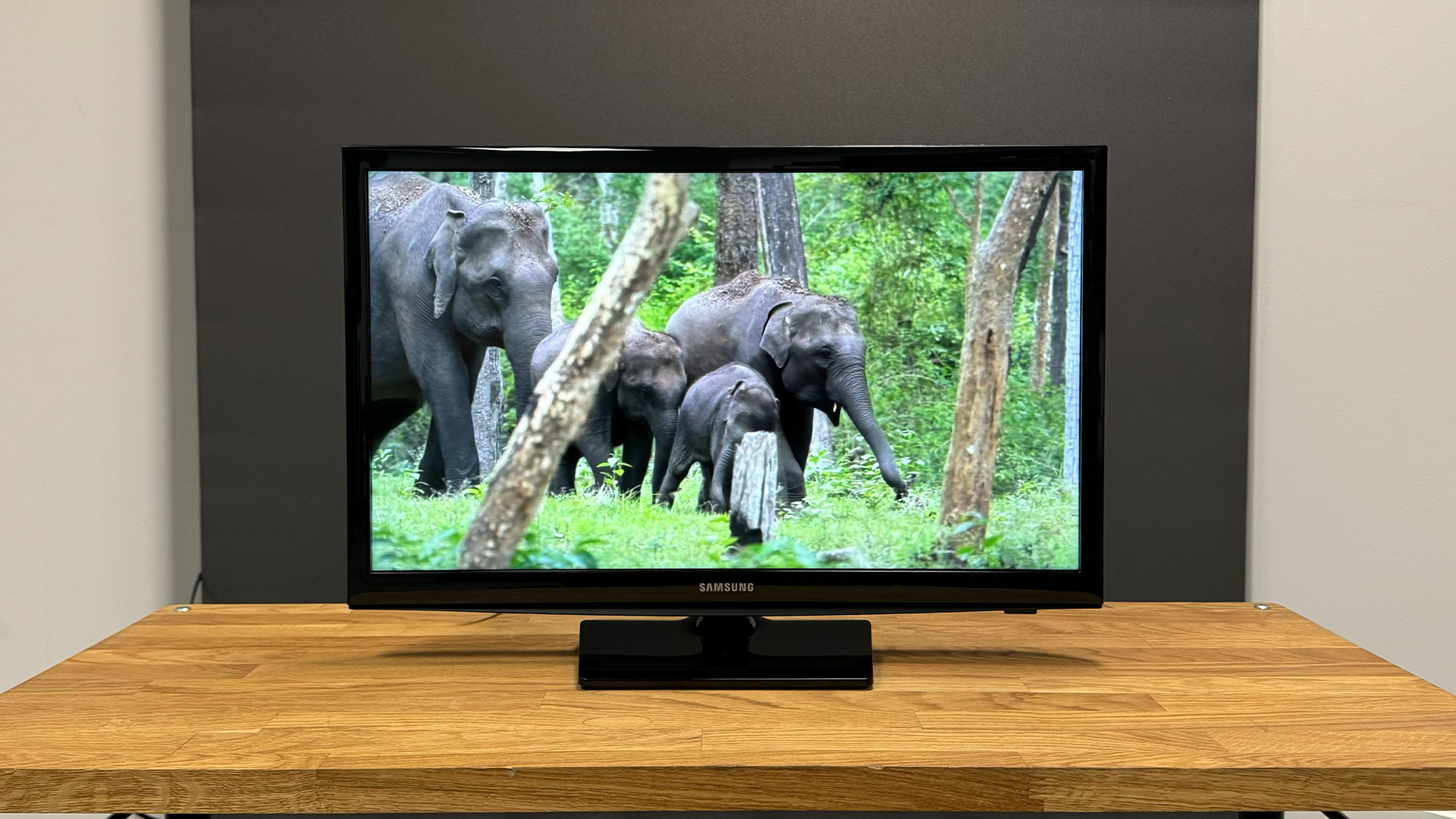
Seeing a Samsung TV on our test benches with a screen as small as 24 inches feels genuinely bizarre at a time when the brand seems more focused than ever on building an empire of big, bold, uncompromisingly high-end TVs. The simple truth, though, is that in the UK and Europe at least, there’s still a market for 24-inch TVs. And where there’s a market, Samsung is going to want a bit of it. It’s not for nothing, after all, that the brand has been the world’s number-one-selling TV brand for 18 consecutive years.
The major question for us to answer about the UE24N4300, though, is whether Samsung actually still cares about how good such a little TV minnow is now that it’s got so many much bigger fish to fry.
Price
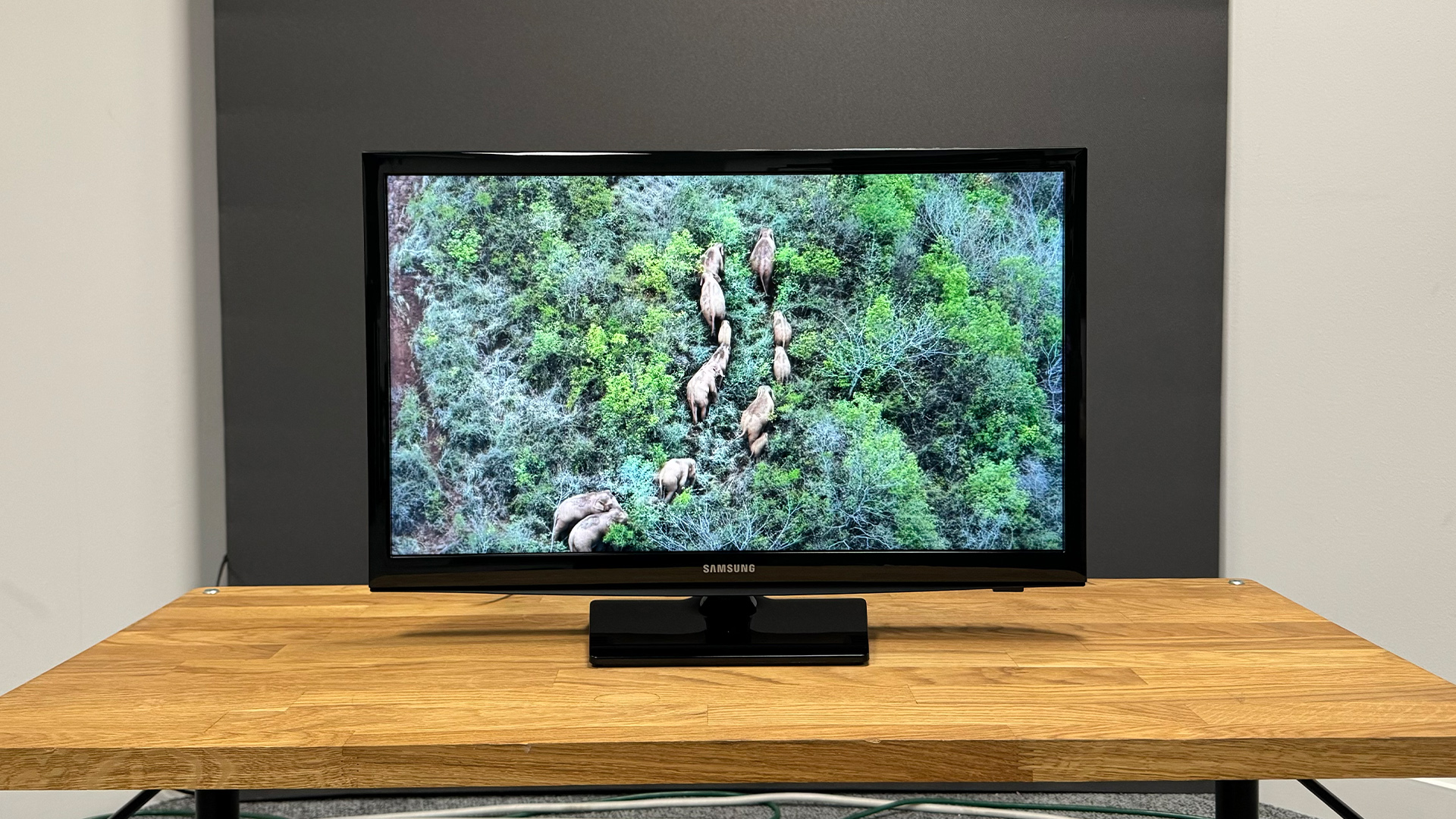
While the UE24N4300’s £169 asking price might not sound a lot in a world where TVs routinely cost many thousands of pounds, it actually puts Samsung’s set towards the top end of the 24-inch TV market. It’s £30 (more than 20 per cent) dearer, for example, than current 24-inch rivals from RCA and Toshiba that we’ll be looking at in the coming days.
As we’ll see, though, the 24-inch N4300 does offer an above-par feature set for its money as well as an on-paper raft of picture quality aids that ought to see it outperforming its cheaper rivals.
The UE24N4300 isn’t available in either the US or Australia, where 32 inches seems to be as small as TV buyers are willing to go.
Design
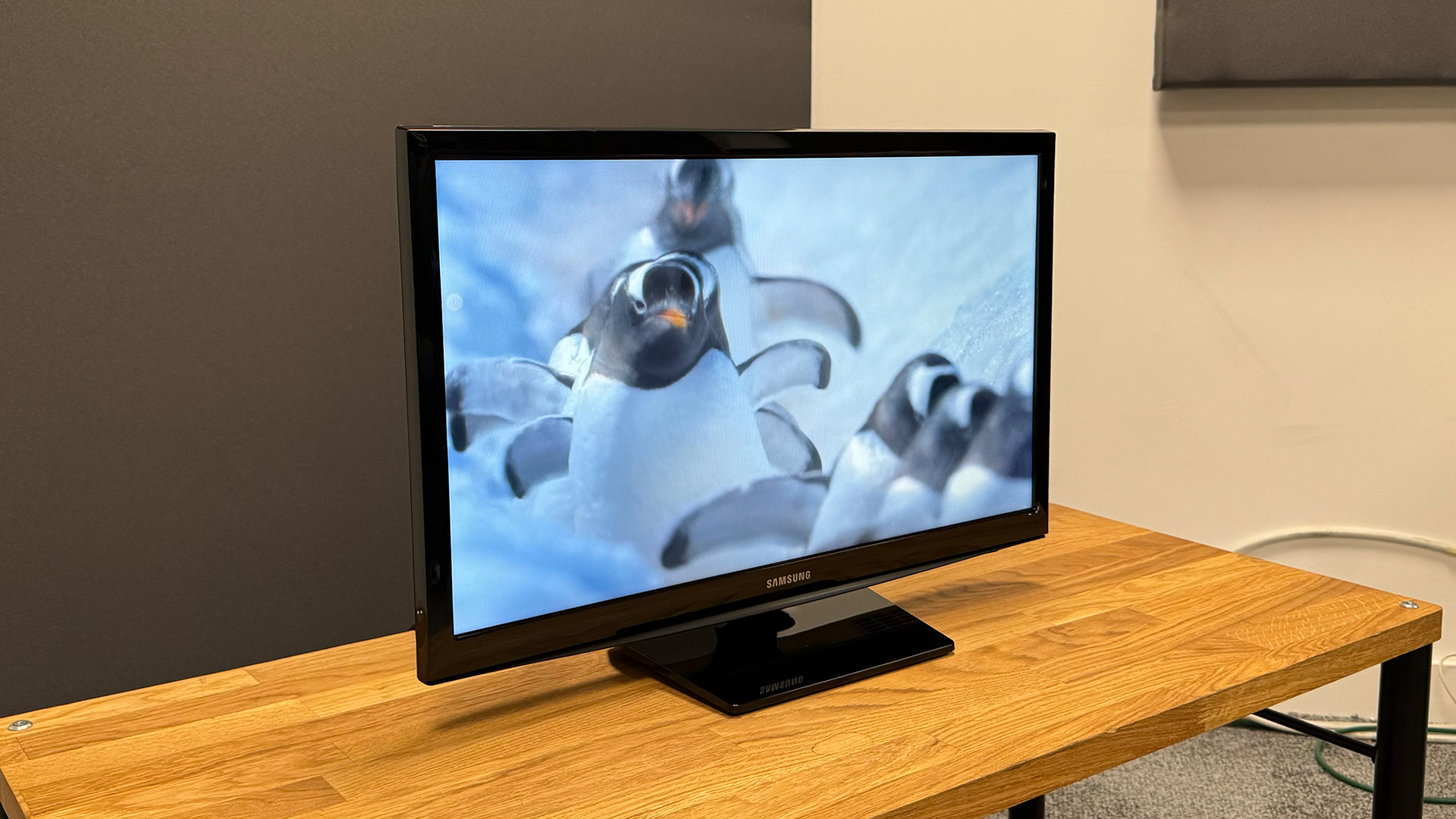
First impressions of the UE24N4300 suggest that Samsung really doesn’t see it as just some ‘throw-away’ product. For starters, its remarkably heavy for such a small TV, suggesting the presence of some high-quality innards as well as the use of premium materials in the strikingly glossy black bodywork.
The desktop stand continues the gloss black, heavy-duty theme too – though while we applaud the sturdiness of the UE24N4300’s design, the finished result does look a bit clunky and old school, especially when it comes to the chunky width of the frame around the screen.
Predictably, the UE24N4300 does not follow the trend of Samsung’s much more premium TVs shipping with two remote controls. You just get the brand’s basic, button-heavy affair. While this isn’t as sleek as Samsung’s Smart remote handsets, it is very easy to use.
Features
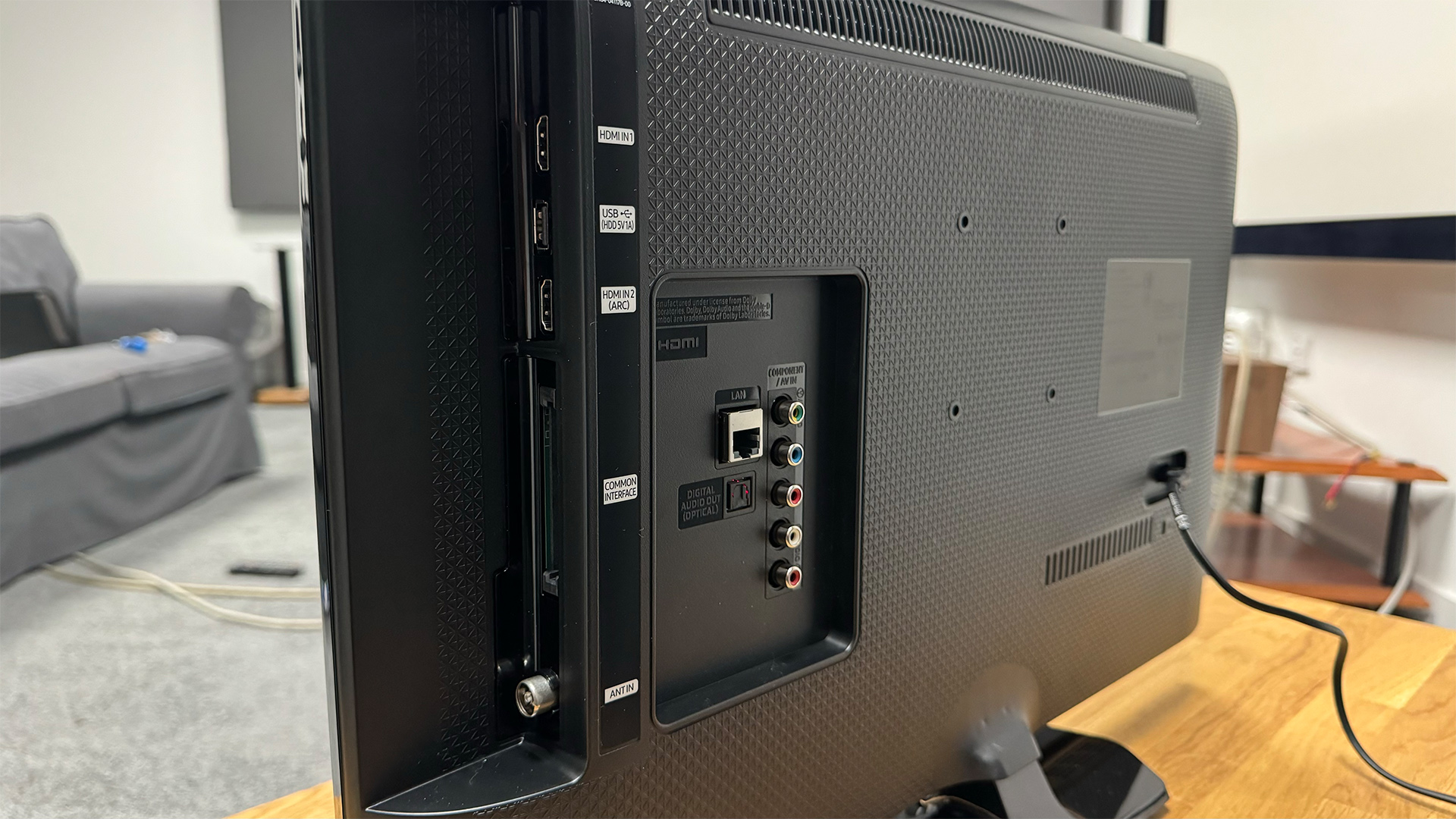
The UE24N4300 actually has quite a lot going on for such a small TV – starting with its inclusion of a fulsome implementation of Samsung’s Tizen smart system. All the streaming services just about everyone could ever need are present and correct, including Prime Video, Netflix, Disney+, Apple TV and the catch-up apps for all the main UK terrestrial broadcasters. You even get a full version of Samsung’s own TV Plus service, which pulls together hundreds of channels of streamed content for anyone willing to go a little ‘off piste’ with their TV viewing.

Type LCD (VA)
Backlight Direct LED
Resolution 1366 x 768
HDR formats HDR10
Operating system Tizen
HDMI inputs x 2
Gaming features None
ARC/eARC ARC
Optical output? Yes
Dimensions (hwd, without stand) 35 x 56 x 6.5cm
The UE24N4300 is also unusual for the small TV world in being controllable via your phone, courtesy of Samsung’s Smart Things app. The only catch on the smart front is that Samsung doesn’t support the Freeview Play ‘umbrella’ app for the UK’s terrestrial broadcaster services. This means you’ll have to navigate through their wares by individual app, rather than being able to explore them through Freeview Play’s handy electronic programme guide and content recommendation tools.
Turning to the UE24N4300’s picture features, it boasts a trio of fancy-sounding tricks: Micro Dimming Pro, Ultra Clean View and Purcolor. Oooohhhh, we (probably) hear you cry. The first of these features, though, isn’t some sort of true local dimming control system. Instead, it’s a system where the image is broken up into a series of small blocks for more localised analysis so that the TV can do a more effective job of continually optimising playback.
Ultra Clean View uses one of those ‘advanced algorithms’ TV brands like to talk about these days to enhance sharpness and clarity, and reduce blurriness, while Purcolor, finally, enables the UE24N4300 to produce and more accurately control a wider range of well-controlled colours than basic LCD panels. Something that could prove handy for the screen’s delivery of high dynamic range video (which is almost always accompanied by a wide colour gamut).
The UE24N4300’s HDR support covers HDR10, but not Samsung’s HDR10+ system for adding extra scene-by-scene data to the picture stream. Plus, as ever with any Samsung TV, there’s no support for the popular Dolby Vision premium HDR format. Play a Dolby Vision master into the UE24N4300, and the image will reduce to an HDR10 feed.
Before anyone gets too upset by this, though, getting any sort of HDR support on such a small TV should probably be seen as an unexpected bonus. Plus, in truth, most small TVs will likely struggle to produce enough brightness to really do HDR justice anyway.
As you’d expect given the near impossibility of fitting a 4K pixel count into such a small screen area, the UE24N4300 is an HD Ready screen with a resolution of 1366 x 768. That’s actually slightly higher than the 1280 x 720 pixel counts of many 24-inch rivals.
The UE24N4300’s connections are fair for such a small TV, as two HDMIs are joined by a single USB port, a composite video input, an Ethernet LAN port, an optical digital audio output, a terrestrial RF port, a CI slot and a component video input.
You don’t tend to find composite and component video ports on today’s premium TVs, of course, but either the UE24N4300 is built on quite an ageing core chassis, or else Samsung thinks anyone buying a 24-inch TV in 2024 may be the sort of person likely to have quite a bit of ‘legacy’ AV gear lying around.
Gamers probably won’t be surprised to hear that there’s no support over HDMI for such premium gaming features as 120Hz feeds or VRR. Given Samsung’s gaming prowess with its premium TVs, though, gamers might be a bit frustrated to learn that while the UE24N4300 does carry a Game picture preset, even with this active the screen only gets input lag down to a fairly high 54.1ms. That’s nearly two frames of delay with a 30fps game engine, which could be more than enough to get you repeatedly unfairly obliterated on reaction time games like Call Of Duty.
Picture
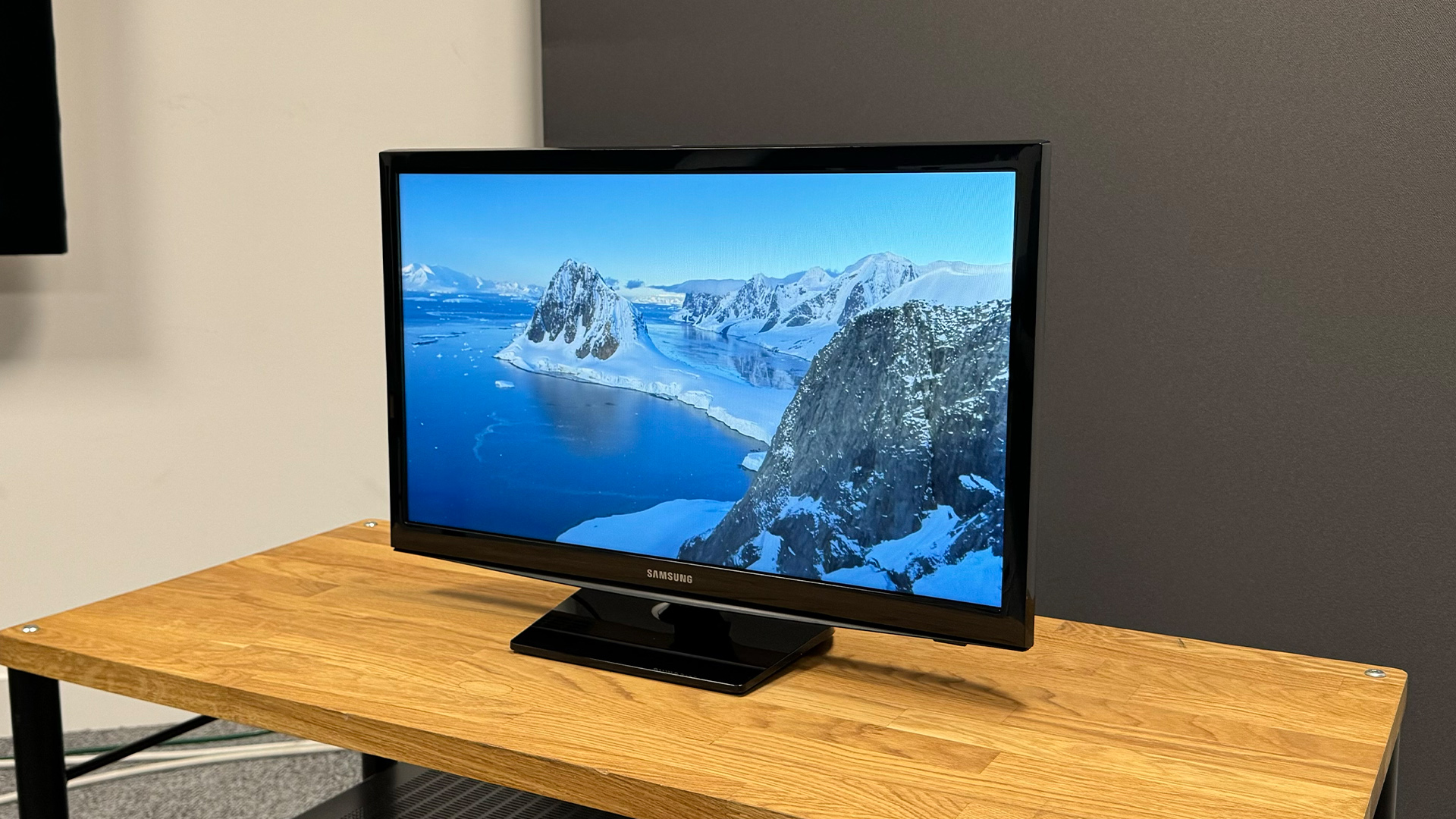
The Samsung UE24N4300 gets off to a great start with an excellent black-level performance by small TV standards. Dark scenes look remarkably free of the tell-tale grey wash over everything that we expect to see to some extent with all miniature TVs these days. At the same time, there’s nothing forced about this embracing of the dark side – dark scenes still contain plenty of subtle shadow detail, for instance, and there’s a pleasingly neutral tone to black colours instead of the blue or green ‘washes’ with which many small or budget LCD TVs suffer.
There’s no sign, either, of the brightness instabilities that can appear on some of Samsung’s premium TVs as they try to combine their high brightness with good black levels. Great though it is to see such excellent handling of dark scenes on such a small TV, this is surprisingly pretty much where the good news about the 24N4300’s pictures ends.
For one thing, the good black levels seem to be at least partly a result of a pronounced lack of brightness by today’s small TV standards. Its pictures look rather dull no matter what source you’re watching, meaning that the TV neither gets much joy out of its HDR support nor feels like a great option for the sort of bright kitchen or conservatory space such a small TV might very well be destined for.
The UE24N4300 feels even less like a Samsung TV with its sharpness. Its pictures generally lack that crispness and clarity we associate with so many Samsung TVs, and there are two specific extra issues that emphasise the rather mushy starting point.
First, motion isn’t handled at all well. Moving objects are affected by blurring and resolution loss while watching any type of source, and there’s no tool in the TV’s settings arsenal that makes much difference to this issue. Second, during dark and sometimes even mid-dark scenes, the UE24N4300’s colour delivery can start to look quite compressed. So, for instance, the leaves of dark green bushes can look clumpy and ill-defined, or skin tones can start to look plasticky and two-dimensional.
Colours generally tend to look a bit flat and muted on the UE24N4300 too. This is again surprising given the TV’s Samsung DNA, but it was confirmed during comparisons with a couple of other 24-inch TVs we’ll be looking at in the coming days.
Things become even more problematic if you try to watch HDR on the UE24N4300, as colours actually start to look both more washed out (rather than fuller, as we’d hoped) as well as taking on some really quite unconvincing tones. Skin tones, in particular, look so washed out at times with HDR sources that they almost feel black and white – and stand out quite distractingly from the rest of a shot in the process.
Sound
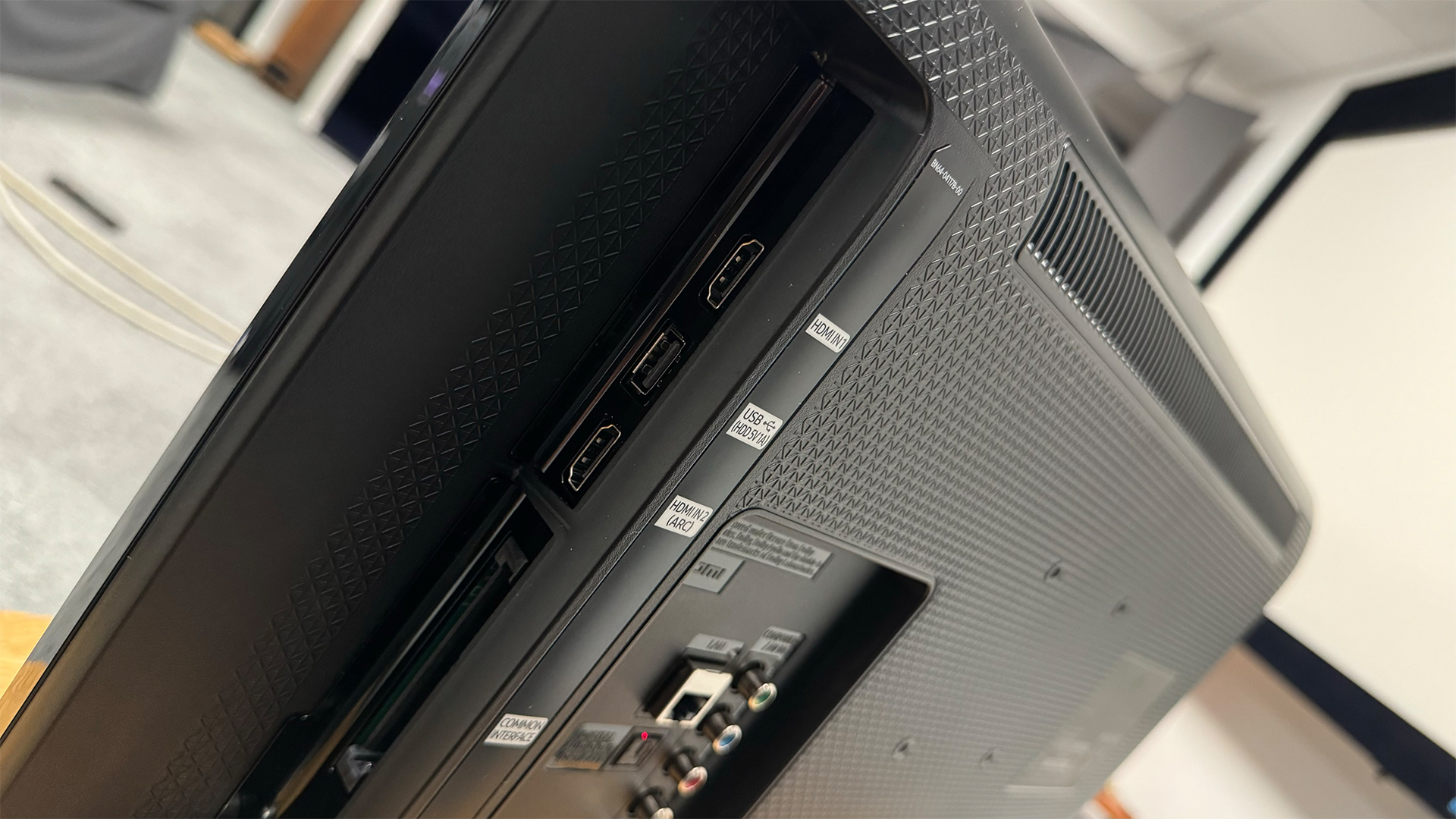
The first thing we noticed about the UE24N4300’s sound is that it’s as small as its screen. Maybe even smaller. Even at max volume the set never gets anything close to what you might call loud.
Not surprisingly this lack of raw power means the UE24N4300’s sound also lacks dynamic range and impact, with high treble sounds tending to hum and warble while ambient sounds often sound over-dominant and ‘breathy’. There’s precious little going on at the bass end of things, either, to give the sound much balance or heft.
This doesn’t mean the UE24N4300 is a complete audio washout. Dialogue sounds reasonably well-rounded by small TV standards, there’s a touch more impact to gunfire, screams and the like than you get with some small rivals, and detail levels are quite high. But the lack of bass or even lower midrange presence means the general tone of the sound is seldom comfortable on the ear.
Verdict
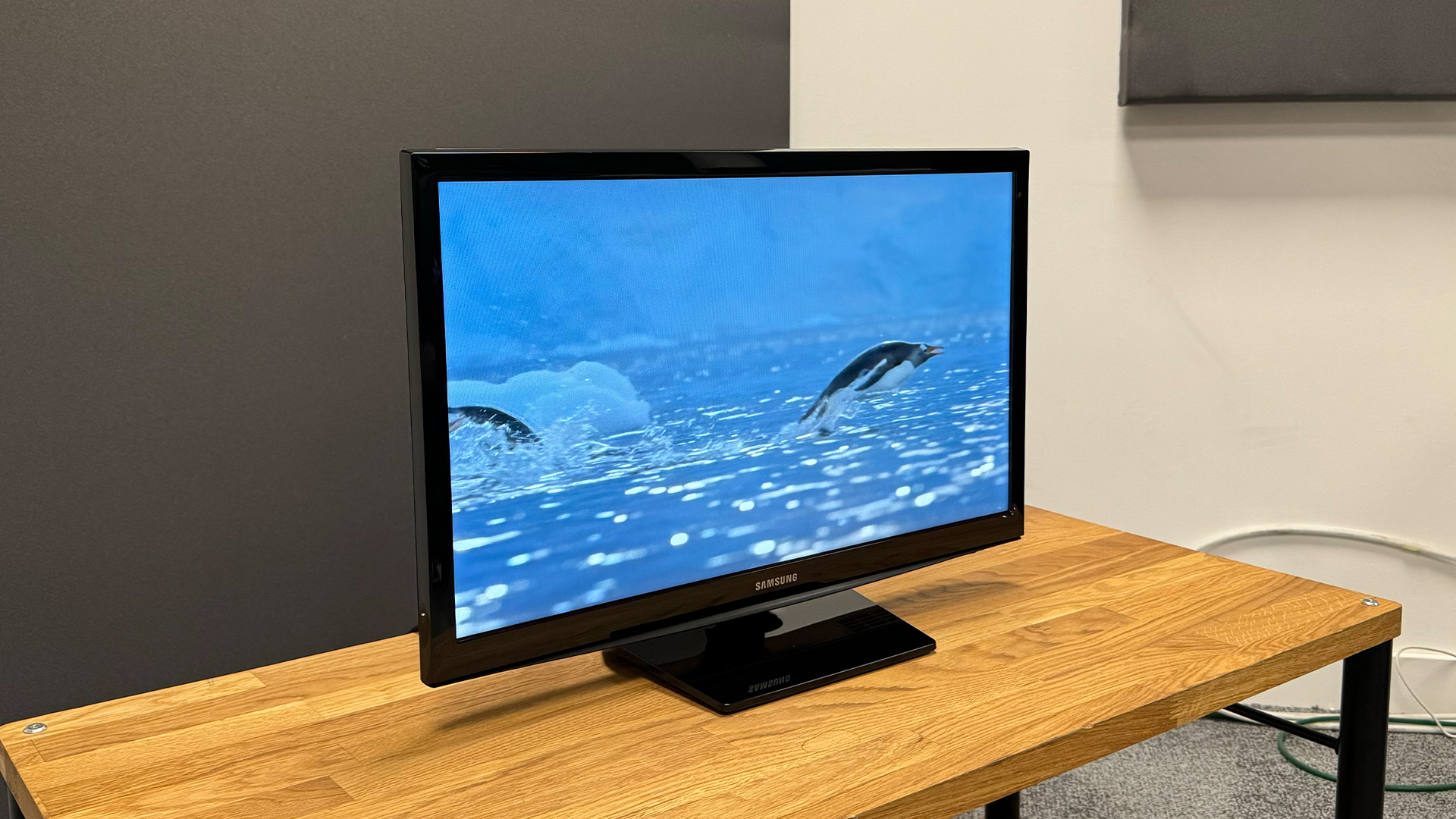
Samsung’s UE24N4300 delivers streaming services galore and has one big picture quality claim to fame in the shape of black tones during dark scenes that may well never be bettered in the course of however many years the 24-inch TV market has left.
While this black-level prowess might well be a major deal if we were talking about a bigger screen likely to be used for some serious movie night action, it actually feels quite a strange thing for Samsung to seemingly have focused on with this 24-inch screen. After all, a TV as small as this is likely to be used in a secondary room, where other picture factors such as brightness, colour and sharpness are likely to be more useful than super-deep blacks.
SCORES
- Picture 3
- Sound 2
- Features 4
MORE:
Also consider the Amazon QL43F601
Best TVs: flagship OLEDs and affordable flatscreens tried and tested







